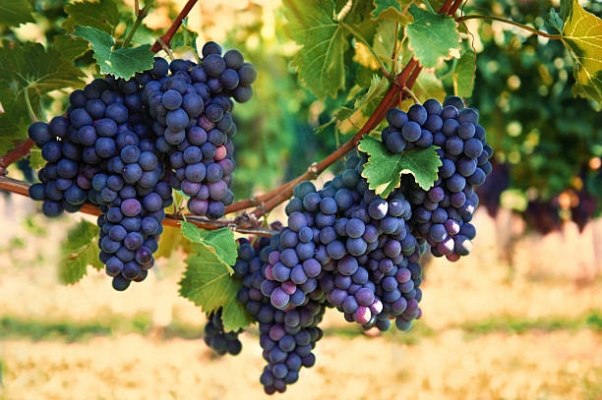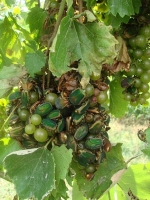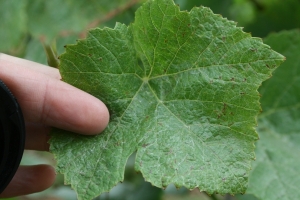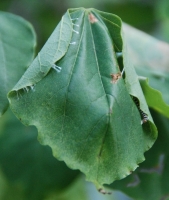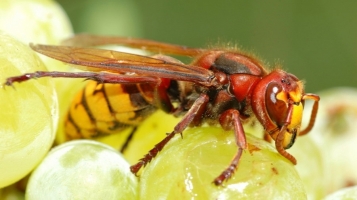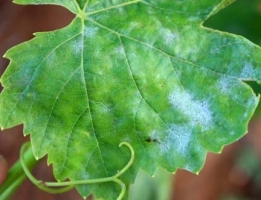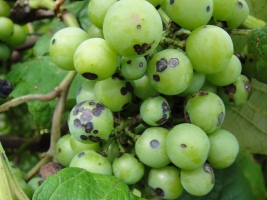Punjab MACS Purple: Released in 2008. The variety is rich in anthocyanins. The fruit is berry which is seeded. Fruits are medium in size and become purple at maturity. It contains medium and loose bunches. The variety matures in first week of June. It is suitable for processing juice and nectar.
Perlette: Released in 1967. High yielding variety, bunches are large to medium in size, grapes are medium size, lightly aromatic, round, thick peel, sweet flesh and hard. It contains 16-18% TSS content. It gives an average yield of 25kg per vine.
Beauty Seedless: Released in 1968. It performs well when grown in south-western districts. It bears medium sized bunches which are well filled. It contains seedless berry which is medium in size and are bluish black in color. Berries contain 16-18% TSS content. The fruit matures in first week of June. It gives an average yield of 25kg per vine.
Flame Seedless: Released in 2000. It has medium bunch, seedless berry which is firm and crispy and becomes light purple in color at maturity. It contains 16-18% TSS content. The variety matures on second week of June.
Superior Seedless: Medium spreading vines. The bunches are medium to large in size. The seeds are large in size and are golden in color. The fruit contains 10.0% sugar content and 0.51% sour content. The variety matures in first week of June. It gives an average yield of 21.8kg per tree.
Other state varieties:
For dry areas:
For making raisins: Thompson Seedless, Black Sahebi
For raw eating: Thompson Seedless, Beauty Seedless, Black Sahebi, Anab-e-Shahi,
For juice making: Beauty Seedless, Black Prince
For making vine: Rangspray, Cholhu White, Cholhu Red
For low hilly areas:
Perlette, Beauty Seedless, Delight, and Himred.
Thompson Seedless: Bunches are big, equal sized grape, the grape is medium long, green color fruits turn golden at maturity, fruit is seedless, hard and good taste, late maturing variety.
Black Sahebi: Fruit is purple in color, good quality, good bunches, thin peel and sweet flesh, soft seeds, can be kept for a long time, less fruit yield, large sized fruit.
Anab-e-Shahi: Bunches are medium to large sized filled, milk color fruits, thin peel, good quality fruits having sweet in taste.
Black Prince: Purple color round shaped fruit, thick peel, sweet and soft flesh, medium sized bunches, less dense, good yield giving early variety, suitable for raw eating and for juice making.

